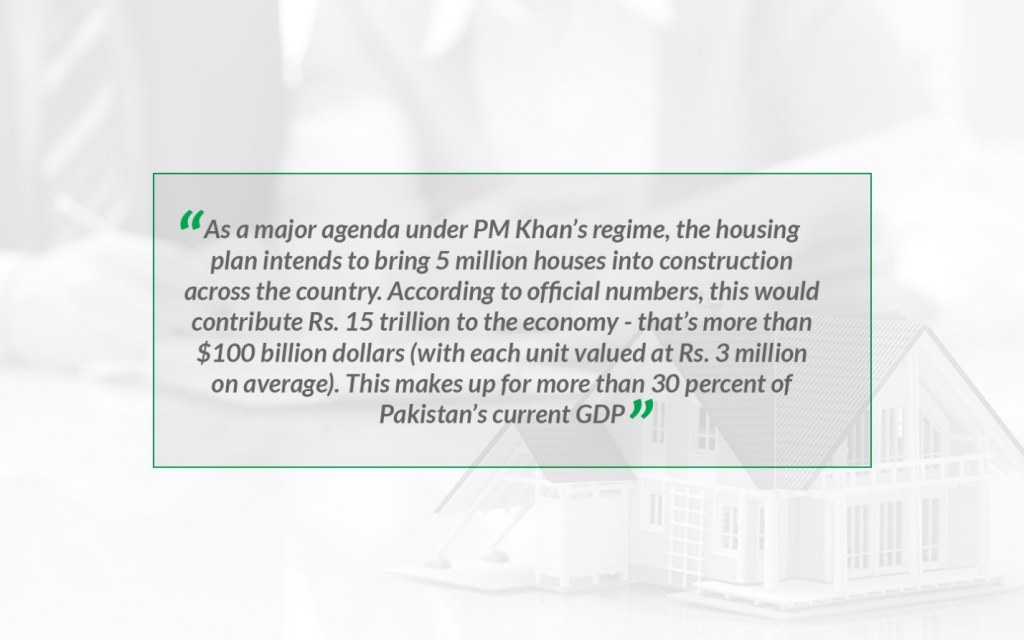Home » Construction » Impact of housing investment: the economic lens
Housing may be viewed through a social lens, but it pays huge economic dividends as well.
A global estimate is that for every $1 invested in housing, an additional $1.5 to $3 are contributed to the GDP. Going by various investment figures, ranging between $150 to $200 billion are required to fill Pakistan’s current shortage of 10-12 million houses, that would make a mammoth contribution to the GDP—more than mammoth, in fact, possibly even doubling the GDP from its current level.
Of course, these are extrapolated estimates. Building 10 million houses across a country where the housing stock has grown only marginally, (by 100,000 – 350,000 units annually against an annual increasing demand of 400,000 to 700,000 units), it would be an incredible feat to accomplish even a fourth of that number.

However, it is relevant in the context of the government’s Naya Pakistan Housing Plan (NPHP). As a major agenda under PM Khan’s regime, the plan intends to bring 5 million houses into construction across the country.
According to official numbers, this would contribute Rs. 15 trillion to the economy— that’s more than $100 billion dollars (if each unit is valued at Rs. 3 million on average). This makes up for more than 30 percent of Pakistan’s current GDP.
There are other more measured approximations as well, which are not as overwhelming but do indicate huge economic benefits. For instance, a World Bank study estimates that a unit increase in expenditure in the construction sector has a multiplier effect, and the capacity to generate income as great as five times the cost of the unit.
Demand in the housing sector feeds into as many as 40-50 allied industries, many of which are SMEs. Some of the biggest industries involved are steel, cement, marble, and other building materials sectors. A housing project will provide business growth for them, as well as for small manufacturing and service providers.
To put some numbers to that, based on the cost of housing in two major cities, Lahore and Karachi, a study published by Karandaaz Pakistan calculates that building 100,000 incremental houses in Lahore alone will contribute up to 1.9 percent to the GDP. For a million houses, the contribution would be 10 times of that number.
Meanwhile, the same number of apartments in Karachi, within a high-rise apartment building (estimated 40 apartments) should yield 2.2 percent of the GDP output. This contribution is calculated simply by using construction costs of various houses in Lahore and Karachi during 2017.
Another interesting number from the aforementioned study is 2400 percent. That is the return on investment for a housing project in the outskirts of Karachi for a high-rise complex with 600 apartments. Evidently, housing is not a social project, it is also an economic one where the government’s role should be that of a facilitator.
Given these numbers though, the government’s fiscal support should be minimal anyway. The sector should be driven by the active participation of private sector developers, builders, and investors. The government’s housing project, therefore, has massive potential, which is why foreign investors are displaying tremendous interest in a project like the NPHP. However, the government should ensure that this momentum and enthusiasm is positively facilitated through meaningful policy interventions in the real estate sector of the country.



